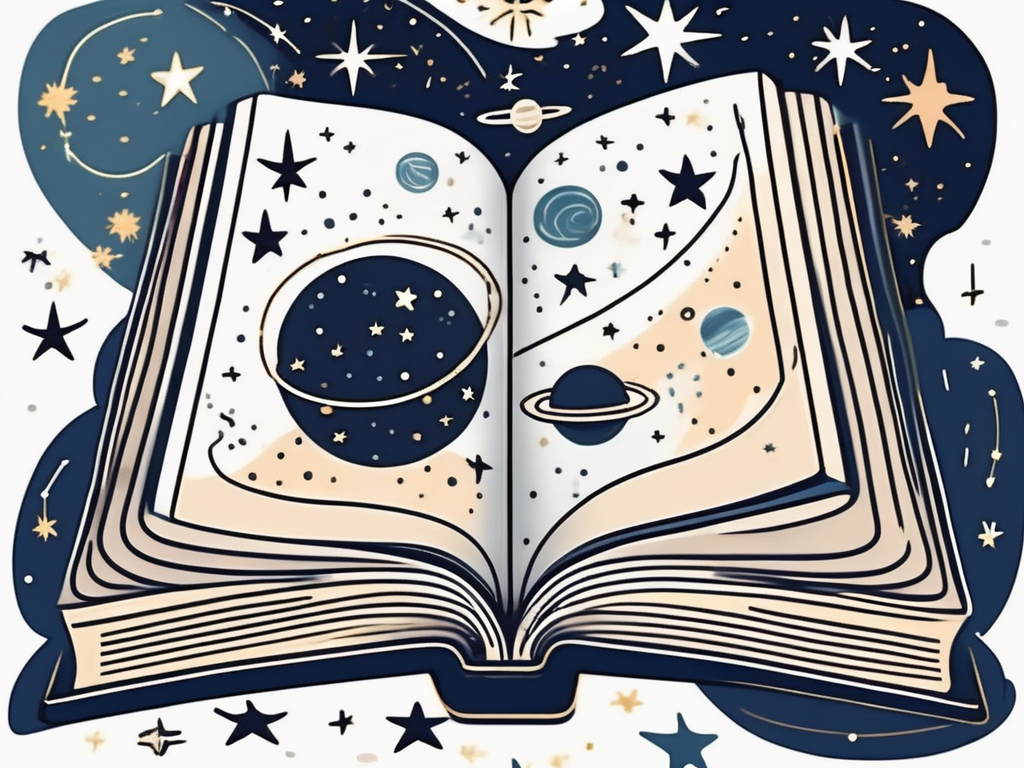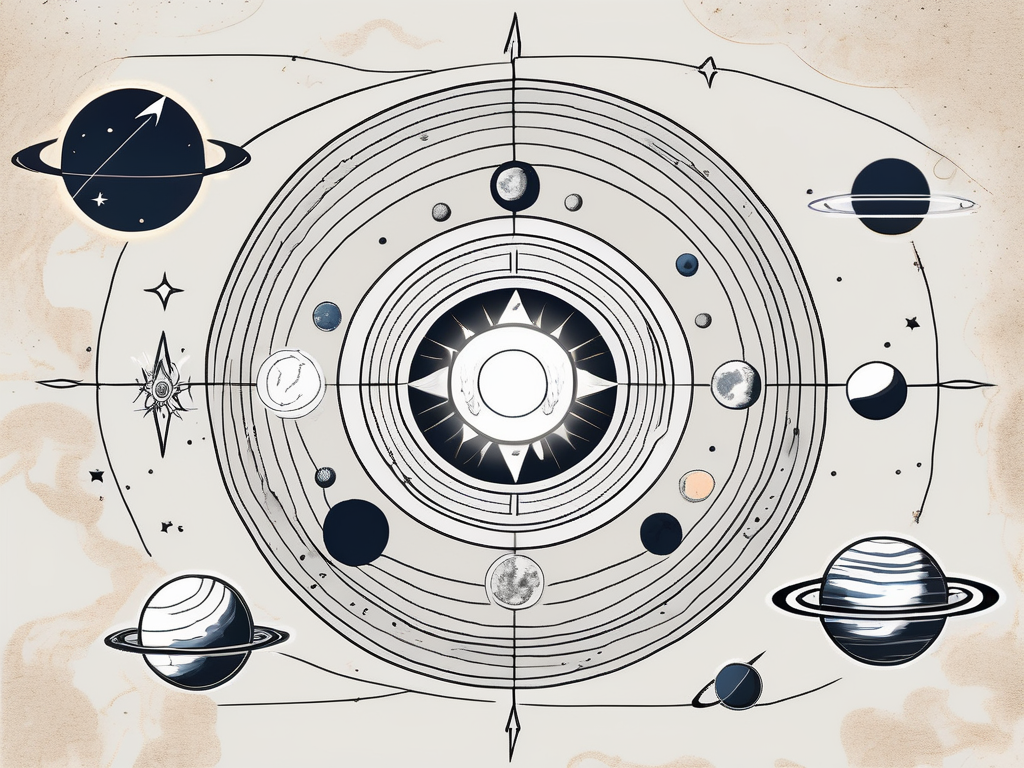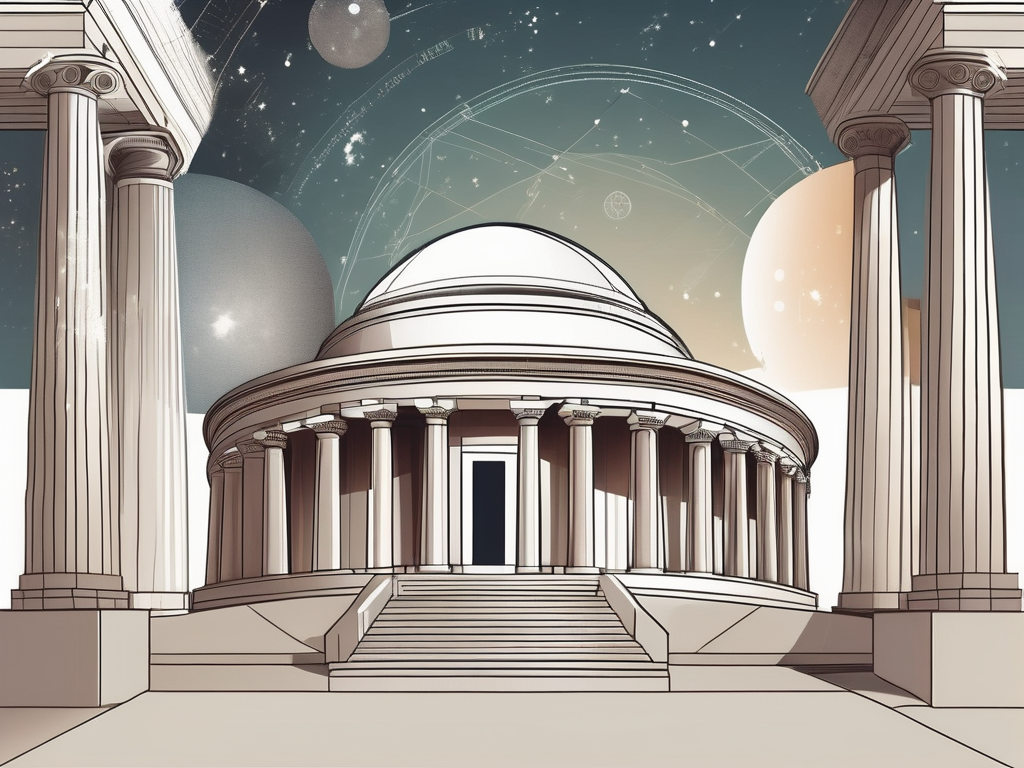In this comprehensive guide, we will dive into the fascinating world of Hindu Astrology and explore its intricate details. From understanding the basics to exploring predictive techniques and remedial measures, we will cover it all. So, buckle up and get ready to embark on a journey through the cosmos!
Understanding the Basics of Hindu Astrology
Before we delve into the depths of Hindu Astrology, let’s first grasp the fundamental concepts. Astrology is the art of studying the celestial bodies’ positions and their influence on human lives. In Hindu Astrology, also known as Vedic Astrology, the planetary movements are believed to impact individuals based on their birth details.
Hindu Astrology revolves around the concept of nine planets, each having a unique role in shaping one’s destiny. These planets include the Sun, Moon, Mars, Mercury, Jupiter, Venus, Saturn, Rahu, and Ketu. The movements and positions of these planets at the time of a person’s birth are analyzed to create their birth chart.
But what exactly do these planets represent in Hindu Astrology? Let’s take a closer look.
The Role of Planets in Hindu Astrology
Each planet in Hindu Astrology represents specific traits and influences various aspects of life. For instance, the Sun signifies ego, power, and vitality, while the Moon governs emotions and intuition. Similarly, Mars is associated with energy and passion, and Mercury represents communication and intellect.
Understanding the characteristics of each planet is crucial in interpreting a birth chart accurately. By analyzing the interactions between these celestial entities, astrologers can uncover valuable insights about an individual’s personality, relationships, career, and more.
Now that we have a better understanding of the planets, let’s explore another important component of Hindu Astrology – the zodiac signs.
The Zodiac Signs in Hindu Astrology
Now that we have grasped the role of planets, let’s explore the twelve zodiac signs in Hindu Astrology. These signs, also called Rashis, are an essential component of the birth chart. Each zodiac sign is correlated with specific personality traits, strengths, and weaknesses.
For example, Aries demonstrates leadership qualities, while Taurus symbolizes determination and stability. Gemini embodies versatility and curiosity, while Cancer represents emotional sensitivity and nurturing tendencies. From Leo’s confidence to Virgo’s attention to detail, each sign brings a distinct flavor to the cosmic table.
Understanding the zodiac signs helps astrologers gain a deeper understanding of an individual’s personality and how they navigate the world. But Hindu Astrology doesn’t stop there – it goes even further with the concept of Nakshatras.
The Concept of Nakshatras
In addition to zodiac signs, Hindu Astrology also considers the twenty-seven Nakshatras, or lunar mansions. These Nakshatras divide the zodiac into smaller segments, creating a more nuanced understanding of an individual’s personality and life experiences.
Each Nakshatra has its ruling deity and is associated with particular qualities and challenges. By analyzing the Nakshatra placement in the birth chart, astrologers gain profound insights into various aspects of life, including career, relationships, and spiritual growth.
With the inclusion of Nakshatras, Hindu Astrology offers a comprehensive and detailed analysis of an individual’s life journey. By combining the influences of planets, zodiac signs, and Nakshatras, astrologers can provide valuable guidance and predictions.
So, the next time you come across Hindu Astrology, remember that it is not just about the planets and zodiac signs – it is a vast and intricate system that seeks to unravel the mysteries of human existence.
The Importance of Birth Charts in Hindu Astrology
Now that we have grasped the basics, let’s uncover the significance of birth charts in Hindu Astrology. A birth chart, also known as a Janam Kundli, is like a cosmic blueprint that maps the planetary positions at the time of an individual’s birth.
Deciphering the Birth Chart
A birth chart is a visual representation of the planets and their placement in the zodiac signs and houses. By interpreting this intricate diagram, astrologers can unlock valuable insights about an individual’s strengths, weaknesses, talents, and challenges. It serves as a roadmap to understanding one’s life journey.
Each planet in the birth chart represents a different aspect of life. For example, the Sun represents the individual’s core essence and vitality, while the Moon signifies emotions and the inner self. Mercury represents communication and intelligence, Venus represents love and relationships, Mars represents energy and passion, Jupiter represents expansion and growth, Saturn represents discipline and responsibility, and so on.
The Houses in a Birth Chart
In Hindu Astrology, a birth chart consists of twelve houses, each signifying a different aspect of life. These houses represent various spheres, such as personality, wealth, siblings, education, career, marriage, and spirituality.
Understanding the significance of each house is vital in analyzing the overall impact of the planets and their interactions. For instance, the first house represents the self and physical appearance, while the second house governs wealth and possessions. The third house represents communication and siblings, the fourth house represents home and family, the fifth house represents creativity and children, the sixth house represents health and daily routines, and so on.
The Planetary Positions and Their Significance
Not only do the planets’ placements in specific houses matter, but their relationships with each other also hold immense importance. Some planetary combinations create harmony and bring positive outcomes, while others may create challenges and obstacles.
By studying the planetary positions and their aspects, astrologers can predict the energetic influences affecting various aspects of life. This knowledge helps individuals make informed decisions and navigate through life’s ups and downs with clarity.
For example, if Mars is placed in the seventh house of partnerships and marriage, it may indicate a strong and passionate partner. However, if it forms a challenging aspect with Saturn, it could suggest difficulties or conflicts in relationships that need to be addressed and resolved.
Furthermore, astrologers also consider the placement of the Ascendant, also known as the Rising Sign, which is the zodiac sign that was rising on the eastern horizon at the time of birth. The Ascendant represents the individual’s outward personality and how they interact with the world.
Additionally, the birth chart can reveal important timing factors through the study of planetary transits and progressions. Transits refer to the current positions of the planets in relation to the birth chart, while progressions represent the gradual evolution of the birth chart over time. These factors help astrologers make predictions about significant life events and timing.
In conclusion, birth charts play a crucial role in Hindu Astrology as they provide a comprehensive understanding of an individual’s life journey, strengths, weaknesses, and potential challenges. By analyzing the planetary positions, houses, and their interactions, astrologers can offer valuable insights and guidance to help individuals navigate through life with clarity and purpose.
The Five Elements of Hindu Astrology
Hindu Astrology incorporates the concept of Pancha Bhootas, or the five elements, to gain a deeper understanding of an individual’s nature and character. These elements, namely Earth, Water, Fire, Air, and Ether, exist within us and influence our thoughts, emotions, and behavior.
Let’s delve deeper into the fascinating world of the Pancha Bhootas and explore how each element shapes our lives.
Understanding the Pancha Bhootas
Each element has its distinctive qualities and influences different aspects of life. Earth embodies stability and practicality, grounding us in the physical world. It represents the solid foundation upon which we build our lives. Water, on the other hand, relates to emotions and intuition. It flows and adapts, reflecting our ever-changing emotional landscape.
Fire represents passion and transformation. It ignites our desires and fuels our ambitions, propelling us forward on our life’s journey. Air signifies intellect and communication. It is the element of ideas and thoughts, allowing us to express ourselves and connect with others through words and gestures. Lastly, Ether symbolizes space and spirituality. It represents the vastness of the universe and our connection to something greater than ourselves.
By recognizing the dominant elements within ourselves, we can better align with our true nature and make choices that resonate with our innate strengths and desires. Understanding the interplay between these elements can provide valuable insights into our personalities and guide us towards a more fulfilling life.
The Connection Between Elements and Planets
In Hindu Astrology, each planet is associated with specific elements. For instance, Mars aligns with Fire, representing its fiery and assertive energy. Venus, on the other hand, is associated with Water, symbolizing its emotional and sensual nature. Saturn corresponds to Air, reflecting its disciplined and structured influence. Mercury, the planet of communication and intellect, is linked to Earth, emphasizing its practical and analytical qualities.
Recognizing the interplay between planetary energies and elemental dominance allows individuals to harness their innate strengths and navigate challenges efficiently. By understanding how these elements and planets interact, we can gain a deeper understanding of ourselves and the world around us.
As we explore the intricate relationship between the Pancha Bhootas and Hindu Astrology, we unlock a wealth of knowledge that can guide us on our spiritual and personal journeys. Embracing the wisdom of these elements allows us to tap into our true potential and live a life aligned with our authentic selves.
Predictive Techniques in Hindu Astrology
Now that we have explored the foundational aspects of Hindu Astrology, let’s uncover the predictive techniques employed by astrologers to unveil the future.
Hindu Astrology, also known as Vedic Astrology, is an ancient system that offers profound insights into various aspects of life. Astrologers use a combination of mathematical calculations, planetary positions, and intuitive interpretations to make predictions. These predictions can provide guidance and understanding about the potential events and experiences that may unfold in an individual’s life.
The Dasha System
The Dasha system is a predictive technique that divides an individual’s life into different periods ruled by specific planets. Each Dasha period has its distinct influence and can shed light on the major life events to unfold.
By analyzing the planetary periods and their interactions, astrologers can provide valuable insights into career growth, relationships, health concerns, and other significant life areas. For example, during the Dasha period ruled by Jupiter, which represents wisdom and expansion, individuals may experience personal and professional growth, educational achievements, and spiritual development.
Furthermore, the Dasha system allows astrologers to identify potential challenges and obstacles that individuals may face during certain periods. By understanding these challenges in advance, individuals can make conscious choices and take necessary precautions to navigate through them effectively.
Transits and Their Impact
Transits refer to the current positions of the planets and their interactions with an individual’s birth chart. These transitory movements influence various aspects of life and can bring about significant changes, opportunities, or challenges.
Astrologers closely study the planetary transits to predict favorable times for career advancements, relationship developments, and personal growth. For instance, when the planet Venus, associated with love and harmony, transits through the seventh house of a person’s birth chart, it may indicate a period of romantic relationships blossoming or the potential for a significant partnership.
On the other hand, challenging transits can signify periods of upheaval or obstacles. For example, when Saturn, the planet of discipline and responsibility, forms a challenging aspect with an individual’s natal Sun, it may indicate a time of hard work, limitations, or delays in achieving personal goals.
By understanding the impact of transits, individuals can align themselves with the cosmic energies and make the most of favorable periods while navigating through challenging ones with resilience and patience.
In conclusion, the predictive techniques in Hindu Astrology, such as the Dasha system and the study of planetary transits, offer valuable insights into an individual’s life journey. Astrologers use these techniques to guide individuals, helping them make informed decisions, understand their strengths and weaknesses, and navigate through the various opportunities and challenges that life presents.
Remedial Measures in Hindu Astrology
Hindu Astrology not only provides insights into our cosmic makeup but also suggests remedial measures to mitigate negative influences and enhance positive outcomes.
The Role of Gemstones
Gemstones are believed to harness the energies of specific planets and can be worn as a remedy to balance the planetary influences. Each gemstone corresponds to a particular planet and can help strengthen its positive traits while reducing its challenging aspects.
By consulting with an astrologer, individuals can identify the gemstone that resonates with their birth chart and wear it to enhance their well-being and overall success.
The Power of Mantras
Mantras, sacred chants or affirmations, are potent tools in Hindu Astrology for invoking positive energies and seeking divine blessings. Chanting specific mantras associated with different planets can help alleviate the negative effects of planetary afflictions.
By incorporating mantras into daily practices, individuals can tap into the profound power of sound vibrations and enhance their spiritual connection, peace of mind, and overall harmony.
The Significance of Rituals and Pujas
In Hindu Astrology, rituals and pujas are performed as remedial measures to appease planets and seek their blessings. These rituals often involve offering prayers, performing specific ceremonies, or visiting sacred places.
By engaging in these rituals, individuals can create a positive energetic environment, align themselves with divine forces, and invite auspiciousness into their lives.
So, there you have it – a comprehensive guide uncovering the intricacies of Hindu Astrology. From understanding the basics to exploring predictive techniques and benefiting from remedial measures, this ancient practice offers a profound understanding of our cosmic makeup and a roadmap to a fulfilled life. Embrace the wisdom of the stars and allow Hindu Astrology to illuminate your path!












